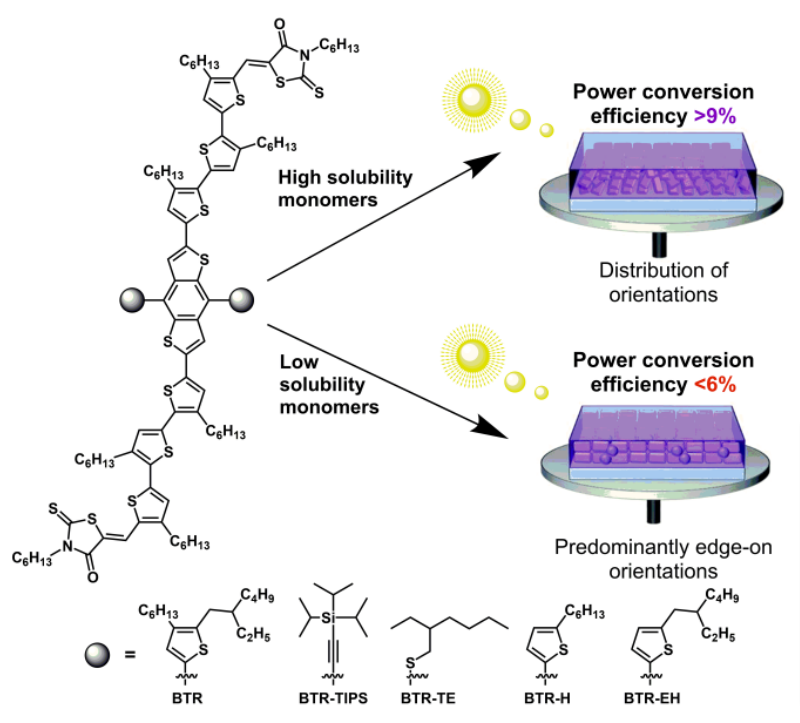

Understanding organic solar cells
The design and implementation of alternative energy sources is one of the greatest scientific and social challenges of our time. The harvesting of solar energy for transformation into electricity via the photovoltaic effect shows great promise for renewable energy. In order to design more highly efficient organic solar cells (OSCs) it is necessary to understand the correlation between the molecular structure of their monomers, thin film morphology and photovoltaic performance.
Our research

The monomers investigated, with varying headgroups, and a visualisation of the thin films which they formed.
Small molecular OSCs, as an alternative to polymer based systems, are more favoured in industrial applications, due to the high degree of structural elucidation possible, synthetic reproducibility and ability to form crystalline thin films. Critical for OSC performance is the crystallinity, size and orientation of n-type and p-type semiconductor domains within the films.
In this publication, monomers were synthesised with an electron-rich benzodithiophene (BDT) core unit, flanked by alkyl-substituted terthiophene π-bridges and endcapped with electron-poor rhodanine units, and a series of BDT headgroups, in order to investigate the impact of differing steric bulk and solubility of the headgroups. Thin films were formed by spin coating of the monomers, followed by solvent vapour annealing.
In order to elucidate the impact of the different headgroups on the crystalline structure and orientation of their corresponding thin films, grazing-incidence wide-angle X-ray scattering (GIWAXS) and macromolecular crystallography (MX) were used to qualitatively and quantitatively analyse the structures on a nanometer scale. GIWAXS was used because it reveals the orientation of the monomers in the film relative to the substrate.
It was observed that films with the highest power conversion efficiency (>9%) were made with the monomers with the highest solubility, and formed films with a distribution of orientations. The films with lower power conversion efficiency, made with the less soluble monomers, formed films with predominantly edge-on orientations, which in unfavourable for photovoltaic performance.
Our impact
Organic photovoltaic devices that can be produced by simple solution based processing techniques offer great potential for mass production of light-weight, flexible and cost effective solar cells which are ideal for the renewable energy industry. A thorough understanding of the structure-property relationship of photovoltaic systems is critical to maximise OSC performance and future design of these materials.